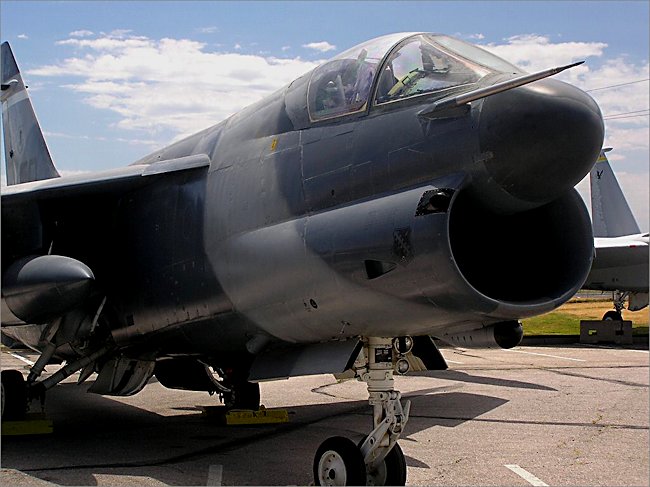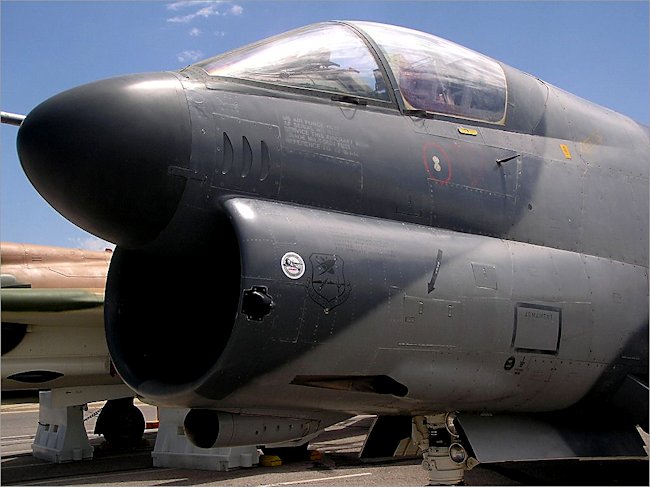Vought A7 Corsair II
The Vought A7 Corsair was designed as a replacement for the carrier-based US Navy A-4 Skyhawk light-weight fighter bomber. It had to carry a larger ordnance payload over a greater combat area. In March 1964 Vought won the contract. The A7 Corsair has now been replaced by McDonnell Douglas US Navy F/A-18 Hornet Fighter. It was retired in 1991 from active service in the USAF and USN.
As the USN A-7 was in development, the USAF evaluated the design and determined that it met a US Army demand for a dedicated close air support aircraft. On 5 November 1965 the USAF announced that it would purchase a version of the A-7, designated the A-7D, for Tactical Air Command. The A-7D differed in engine, systems, and armament from the Navy's initial A-7A and A-7B models. The first prototype flew on 6 April 1968, and the A-7D entered service in 1970. The USAF also purchased and upgraded version for a close support role.

The US Navy Corsair II's had two 20 mm Colt Mk 12 cannon with 250 rounds per gun but later this was changed to a single 20 mm M61 Vulcan weapon Gatling gun with 1,030 rounds of ammunition. The Vought A-7 Corsair's ordnance on six wing pylons; two fuselage pylons normally including two AIM-9 Sidewinders on fuselage side rails for self-defense. It carried a wide range of general-purpose bombs , AGM-65 Maverick, AGM-62 Walleye rocket pods, Paveway laser-guided bombs and GBU-15 electro-optical glide bomb.
A7s first went into combat operations over Vietnam 4th December 1967 aboard USS Ranger. The Corsair II's were used on many missions to supply air support and to attack strategic targets like bridges and supply lines. It also was sent on a number of missions to bomb Hanoi. The A-7Ds were quickly assigned the "Sandy mission" of providing air cover for Combat Search and Rescue missions of downed pilots. The A-7's high speed was a problem when escorting the helicopters but the Corsair's high endurance and durability were an asset. Approximately 98 USN A-7 Corsairs were lost during the war mainly from ground fire.

During the US Invasion of Grenada, codenamed Operation Urgent Fury, in October 1983 USN A-7E squadrons VA-15 and VA-87, from the USS Independence, provided close air support. One A-7 was shot down by Syrian surface-to-air missiles (SAM) on 4 December 1983 during the US Navy air support role during the U.S. mission in Lebanon. The US Navy deployed two of their last A-7E squadrons to Operation Desert Shield in August 1990 aboard USS John F. Kennedy for ground attack bombing missions. The USAF at this stage had started to use A10 Warthogs on operations instead of the A7.